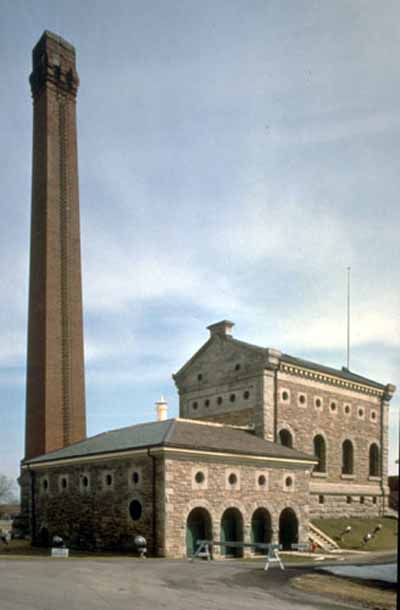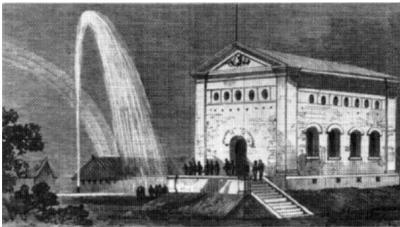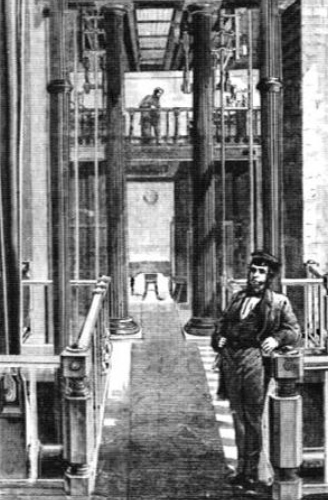Hamilton Waterworks National Historic Site
Hamilton Waterworks was designated a national historic site in 1977.
Commemorative plaque: 900 Woodward Avenue, Hamilton, OntarioFootnote 1
Hamilton Waterworks
This dignified building, reminiscent of the style of a Roman aqueduct, houses one of Canada's greatest surviving engineering achievements of the mid-19th century, the Hamilton Waterworks. Built between 1857 and 1859, it was designed by the prominent Canadian engineer, Thomas C. Keefer. Its grand interior, dominated by giant cast-iron doric columns, houses steam engines cast by the nearby Dundas foundry. The pumphouse produced as many as five million gallons of water daily until 1910, when increasing demand and improved technology forced its retirement.
Description of historic place
Hamilton Waterworks National Historic Site of Canada is a gracious complex of mid 19th-century brick industrial buildings located just west of the present City of Hamilton Waterworks on a narrow strip of land between Woodward Avenue and the Queen Elizabeth Way. The complex can be readily identified by its tall chimney and the distinctive Italianate profile of the original waterworks pumphouse.
Heritage value
Hamilton Waterworks was designated a national historic site of Canada in 1997 because it is an early, rare surviving example of a Victorian industrial building complex that is both architecturally and functionally largely intact.
The heritage value of Hamilton Waterworks National Historic site of Canada lies in its physical illustration of a Victorian industrial complex, in this case a municipal waterworks which survives as a rare representation of the Victorian use of industrial technology to improve quality of life. Value resides in the overall site, setting, design, materials and function of both the complex and its component parts, with particular emphasis upon those original to the 1859 waterworks.

© Parks Canada

© The Illustrated London News 17, November 1860

© The Canadian Illustrated News, September 1863
Hamilton Waterworks was designed by Thomas Coltrin Keefer and built by the City of Hamilton in 1856-1859. Its purpose was to deliver large quantities of clean water for safe drinking and fire control to the rapidly expanding city. The facility was upgraded to address the needs of the growing city in the years that followed: its original Gartshore pumps were replaced in 1882; a second pumping station was built in 1887; a third station with electric and steam turbine engines was installed in 1910-1913. When the complex itself was replaced by a new waterworks on adjacent land in 1970, several buildings in the original group were demolished. Today the early waterworks complex consists of the 1859 Pumphouse with its engines and equipment, an original Boilerhouse, Chimney and Woodshed (all 1859), the Worthington Shed (1910) containing a small steam pump, a second Pumphouse (1913), a Carpenter's Shed (1915), and a large number of in-ground valves and valve chambers dating mainly from the 20th century. The City of Hamilton has restored the original waterworks, and today it is open for public visitation.
Sources: Historic Sites and Monuments Board of Canada, Minutes, 1997; Commemorative Integrity Statement (in Hamilton Museum of Steam and Technology, Hamilton Waterworks: A Conservation and Presentation Report, March 1997).
The National Program of Historical Commemoration relies on the participation of Canadians in the identification of places, events and persons of national historic significance. Any member of the public can nominate a topic for consideration by the Historic Sites and Monuments Board of Canada.
- Date modified :